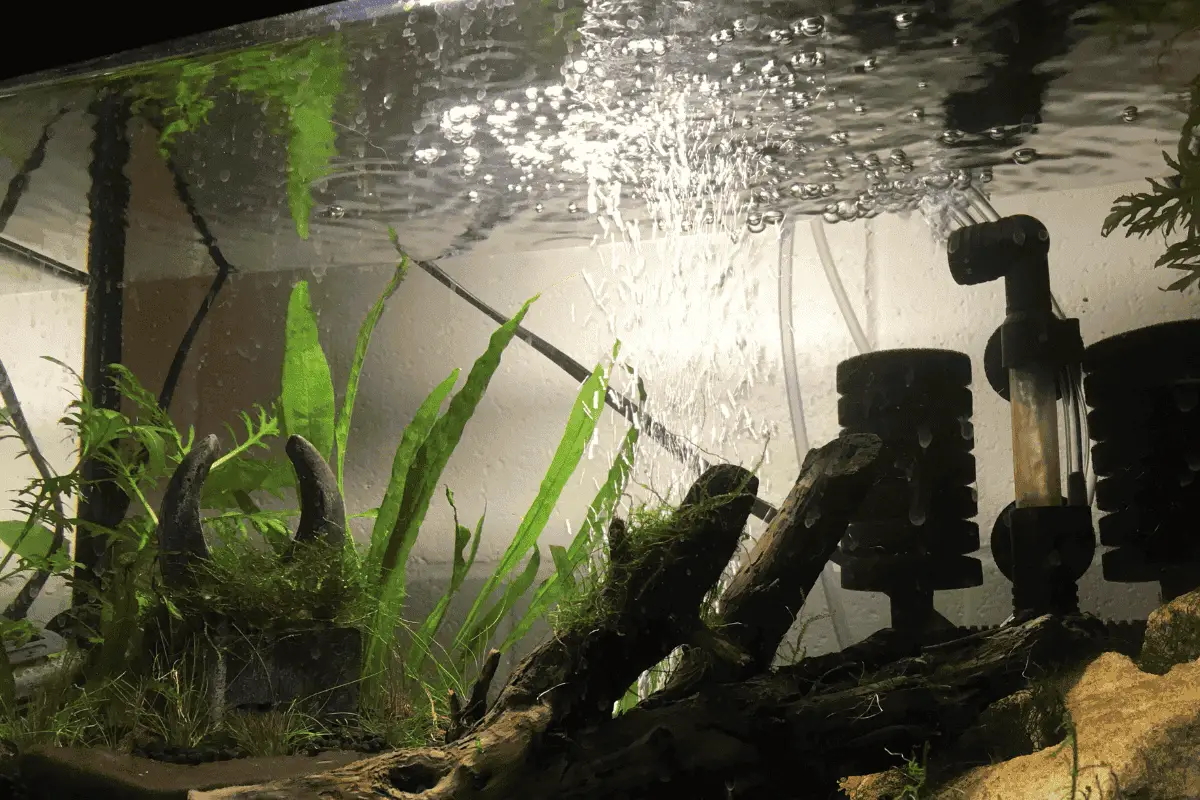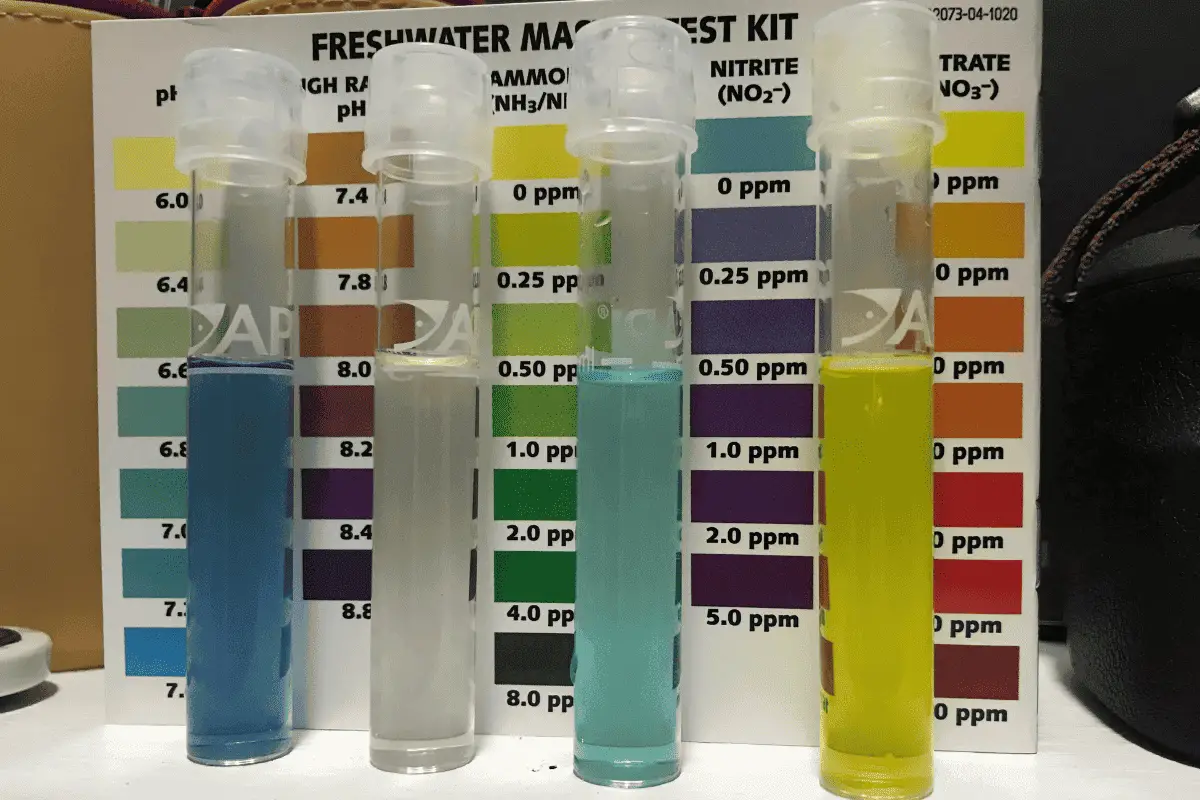Angelfish are truly intriguing animals, and there’s a lot to learn about them. One common topic of interest is their breeding process, particularly regarding their eggs.
So, how can you distinguish between fertilized and unfertilized angelfish eggs? What steps should you take with each type? And how long do fertilized eggs typically need to hatch?
Before we get started, here’s a short summary of the key differences between fertilized and unfertilized angelfish eggs:
| Feature | Fertilized Eggs | Unfertilized Eggs |
| Color Change | Turn creamy white within 24-36 hours | Remain clear or yellowish |
| Egg Appearance | Uniform size and shape | Shrunken or irregular in shape |
| Parental Behavior | Guarded and fanned by parents | Ignored or eaten by parents |
| Fungal Growth | Resistant to fungus | Often covered with cotton-like fungus |
| Transparency | Become more opaque | Stay clear and unchanging |
| Developmental Signs | Visible embryo developpment | Lack of visible embryo development |
Also Read: Angelfish Eggs Care

Signs of Fertilized Angelfish Eggs
Fertilized angelfish eggs are identifiable by distinct characteristics, signaling a successful breeding process.
These signs are crucial for aquarists to ensure proper care and development of the eggs.
- Color Change: Fertilized eggs turn from clear to a creamy white hue within 24-36 hours, indicating healthy development and successful fertilization.
- Egg Clustering: They are often found in clusters, adhering to surfaces like leaves or tank decorations, in a well-organized, neat pattern.
- Parental Behavior: Observing a change in the parent angelfish’s behavior, such as guarding the eggs and fanning them with their fins, suggests the eggs are fertilized.
- Absence of Fungus: Healthy, fertilized eggs resist fungal growth, whereas unfertilized eggs tend to get covered with a cotton-like fungus.
- Size Consistency: Fertilized eggs maintain a uniform size and shape, while unfertilized ones might appear shrunken or irregular.
- Transparency Reduction: Initially, these eggs are somewhat transparent, but upon fertilization, they lose this clarity, becoming more opaque.
- Male Engagement: The male angelfish frequently tends to the eggs, ensuring they are clean and oxygenated, which is a positive sign of fertilization.

Signs of Unfertilized Angelfish Eggs
Unfertilized angelfish eggs are distinguishable through certain signs, which are important for aquarists to recognize in order to manage their fish tanks effectively.
These indicators help in understanding the breeding process and the health of the angelfish.
- Coloration: Unfertilized eggs typically retain a clear or yellowish appearance, lacking the creamy white hue that signifies fertilization.
- Fungal Growth: A common sign is the presence of a cotton-like fungus growing on the eggs, which usually happens within 48 hours.
- Parental Neglect: Unlike with fertilized eggs, parent angelfish may ignore or even eat unfertilized eggs, showing little protective behavior.
- Egg Degradation: These eggs often appear shrunken or collapsed, losing their round, plump shape seen in healthy, fertilized eggs.
- Lack of Development: There’s an absence of visible embryo development inside the egg, which remains clear and unchanging over time.
Also Read: Why Do Angelfish Eggs Turn White?

When Can You Safely Conclude That The Eggs Aren’t Fertilized?
You can determine that angelfish eggs are unfertilized if they fail to change color within 36 hours post-laying and if they exhibit signs of fungal infection, characterized by a cotton-like appearance.
Do Angelfish Fertilize the Eggs After They Are Laid?
Yes, angelfish do fertilize eggs after they are laid. The female angelfish deposits the eggs, typically on a flat surface, and then the male follows to fertilize them externally.
This process is known as external fertilization and is common in many fish species, including angelfish.

What Should You Do with Fertile Angelfish Eggs?
Proper care of fertile angelfish eggs is crucial for their development into healthy fry, requiring a carefully controlled environment and attentive maintenance.
- Maintain Water Quality: Keep water parameters stable, with a temperature of 78-80°F and a pH of 6.8-7.0, using heaters and pH stabilizers if necessary. I picked this API PROPER pH 7.0 (link to Amazon).
- Prevent Fungal Growth: Apply a mild fungicide or a few drops of methylene blue to the water to prevent fungal attacks on the eggs.
- Ensure Oxygenation: Install an air stone or a sponge filter to provide gentle water circulation, ensuring oxygen reaches the eggs efficiently. My recommendation: Hygger Aquarium Air Stone (link to Amazon).
- Parental Supervision: Monitor the parent fish; if they are attentive and experienced, allow them to care for the eggs, otherwise, consider gently transferring the eggs to a separate breeding tank.

What Should You Do with Unfertilized Eggs?
It’s important to manage unfertilized angelfish eggs promptly to maintain a healthy tank environment and prevent potential issues.
- Timely Removal: Remove unfertilized eggs as soon as possible using a siphon or a small net to prevent fungal spread in the tank.
- Monitor Water Quality: After removal, check and adjust water parameters as needed to ensure a stable environment for the remaining fish.
- Parent Fish Care: Observe the parent fish for stress or aggression post-removal, providing a balanced diet and a stress-free environment.
- Tank Cleaning: Conduct a partial water change and clean the tank to eliminate any remnants or fungal spores from the unfertilized eggs.
How Long Does It Take for Fertilized Eggs to Hatch?
Fertilized angelfish eggs typically hatch within 60 to 72 hours, depending on the tank conditions, particularly the water temperature.
A stable water temperature around 78-80°F can accelerate hatching. However, lower temperatures may prolong the development period, delaying hatching slightly.

Why Aren’t My Angelfish Eggs Hatching?
There can be several reasons why your angelfish eggs are not hatching, ranging from environmental factors to issues with the eggs themselves.
Identifying and addressing these factors is key to successful hatching.
- Improper Water Conditions: Ensure water temperature is between 78-80°F and pH is around 6.8-7.0; deviations can delay or prevent hatching.
- Fungal Infection: If eggs are covered in fungus, it’s likely they won’t hatch. Treat the tank with a mild fungicide to prevent this issue.
- Insufficient Oxygenation: Use an air stone or sponge filter to provide gentle water movement, ensuring eggs receive enough oxygen.
- Genetic or Health Issues: Sometimes the eggs are infertile due to genetic or health problems in parent fish. Ensure your angelfish are healthy and well-nourished.
- Parental Disturbance: Overzealous or inexperienced parent fish might accidentally harm the eggs. Consider separating eggs into a breeding tank for safety.

What to Do After Fertilized Eggs of Angelfish Hatch?
Once the fertilized eggs of angelfish hatch, it’s essential to provide specialized care for the fry, including appropriate feeding, maintaining water quality, and monitoring their growth.
- Initial Feeding: Feed the fry with microscopic food like infusoria for the first few days, then transition to freshly hatched brine shrimp as they grow.
- Tank Maintenance: Perform daily 10-15% water changes using a gentle siphon to avoid disturbing the fry, keeping the water clean and stable.
- Water Conditions: Maintain the water temperature around 80°F and pH levels between 6.8 and 7.0, using heaters and buffers if necessary.
- Separation from Adults: If the fry are in a community tank, consider moving them to a nursery tank to protect them from adult fish.
- Monitoring Growth: Keep a close eye on the fry’s development, gradually introducing them to larger foods as they grow over several weeks.
Also Read: How Often Do Angelfish Breed?

Conclusions
For quick readers, here’s a short summary:
- Fertilized angelfish eggs turn creamy white within 24-36 hours and show uniform size, while unfertilized eggs remain clear or yellowish and may appear shrunken.
- Parent angelfish exhibit protective behaviors over fertilized eggs, like guarding and fanning, but may ignore or eat unfertilized eggs, which are prone to fungal growth.
- Angelfish externally fertilize eggs after laying; unfertilized eggs can be identified by lack of color change and fungal presence within 36 hours.
- Fertile angelfish eggs require stable water conditions, fungicide treatment, and proper oxygenation for healthy development; unfertilized eggs should be promptly removed from the tank.
- Fertilized angelfish eggs hatch in 60-72 hours in optimal conditions; failure to hatch may indicate improper water conditions, fungal infection, or parental issues.
